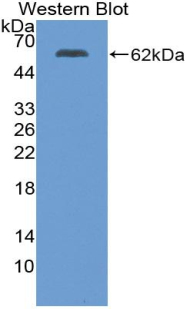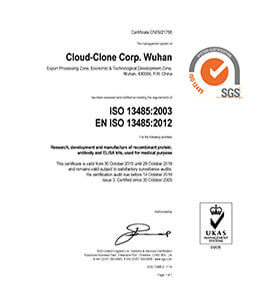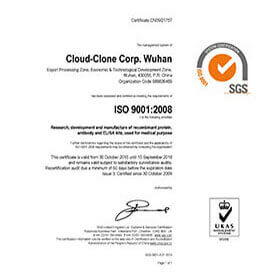Biotin-Linked Polyclonal Antibody to Wingless Type MMTV Integration Site Family, Member 5A (WNT5A)
- Product No.LAP549Mu71
- Organism SpeciesMus musculus (Mouse) Same name, Different species.
- SourceAntibody labeling
- Ig Type IgG
- PurificationAntigen-specific affinity chromatography followed by Protein A affinity chromatography
- LabelBiotin
- Original Antibody n/a
- Buffer FormulationPBS, pH7.4, containing 0.02% NaN3, 50% glycerol.
- TraitsLiquid
- Concentration500µg/mL
- Organism Species MoreHomo sapiens (Human), Rattus norvegicus (Rat)
- ApplicationsWB; IHC; ICC.
If the antibody is used in flow cytometry, please check FCM antibodies. - Downloadn/a
- UOM 20µl100µl 200µl 1ml 10ml
- FOB
US$ 131
US$ 305
US$ 436
US$ 1090
US$ 4360
For more details, please contact local distributors!
SPECIFITY
The antibody is a rabbit polyclonal antibody raised against WNT5A. It has been selected for its ability to recognize WNT5A in immunohistochemical staining and western blotting.
USAGE
Western blotting: 0.2-2µg/mL;1:250-2500
Immunohistochemistry: 5-20µg/mL;1:25-100
Immunocytochemistry: 5-20µg/mL;1:25-100
Optimal working dilutions must be determined by end user.
STORAGE
Store at 4°C for frequent use. Stored at -20°C in a manual defrost freezer for two year without detectable loss of activity. Avoid repeated freeze-thaw cycles.
STABILITY
The thermal stability is described by the loss rate. The loss rate was determined by accelerated thermal degradation test, that is, incubate the protein at 37°C for 48h, and no obvious degradation and precipitation were observed. The loss rate is less than 5% within the expiration date under appropriate storage condition.
GIVEAWAYS
INCREMENT SERVICES
-
 Protein A/G Purification Column
Protein A/G Purification Column
-
 Staining Solution for Cells and Tissue
Staining Solution for Cells and Tissue
-
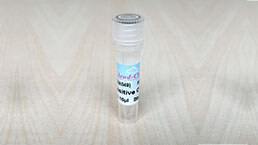 Positive Control for Antibody
Positive Control for Antibody
-
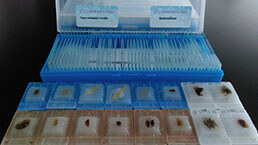 Tissue/Sections Customized Service
Tissue/Sections Customized Service
-
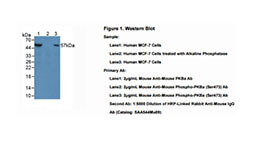 Phosphorylated Antibody Customized Service
Phosphorylated Antibody Customized Service
-
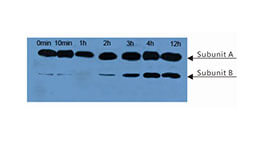 Western Blot (WB) Experiment Service
Western Blot (WB) Experiment Service
-
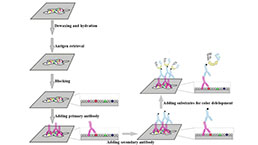 Immunohistochemistry (IHC) Experiment Service
Immunohistochemistry (IHC) Experiment Service
-
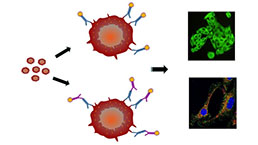 Immunocytochemistry (ICC) Experiment Service
Immunocytochemistry (ICC) Experiment Service
-
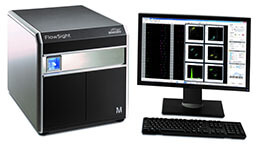 Flow Cytometry (FCM) Experiment Service
Flow Cytometry (FCM) Experiment Service
-
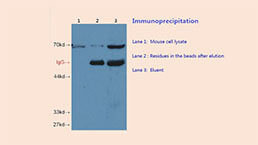 Immunoprecipitation (IP) Experiment Service
Immunoprecipitation (IP) Experiment Service
-
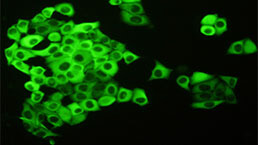 Immunofluorescence (IF) Experiment Service
Immunofluorescence (IF) Experiment Service
-
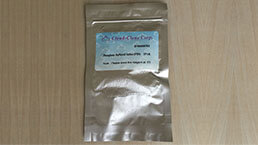 Buffer
Buffer
-
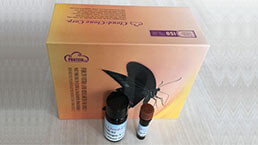 DAB Chromogen Kit
DAB Chromogen Kit
-
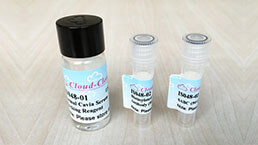 SABC Kit
SABC Kit
-
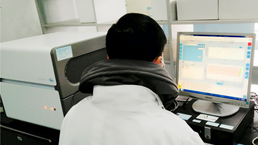 Real Time PCR Experimental Service
Real Time PCR Experimental Service
| Magazine | Citations |
| Liver International | Secreted frizzled-related protein 5 (Sfrp5) decreases hepatic stellate cell activation and liver fibrosis Pubmed:25488180 |
| Journal of Physiology and Biochemistry | Wnt5a reverses the inhibitory effect of hyperoxia on transdifferentiation of alveolar epithelial type II cells to type I cells PubMed: 26547443 |
| Liver | Secreted frizzled‐related protein 5 (Sfrp5) decreases hepatic stellate cell activation and liver fibrosis PubMed: 25488180 |
| Transl Res | Wnt5a is expressed in spondyloarthritis and exerts opposite effects on enthesis and bone in murine organ and cell cultures PubMed: 26163991 |
| 不确定杂志名 | Untersuchungen der Serum-Konzentrationen des proinflammatorischen Glykoproteins wnt-5a und seines antiinflammatorischen Inhibitors sFRP-5 bei an … servlets:MCRFileNodeServlet |
| Life Sciences | Hepatoprotective effect of hesperidin in hepatocellular carcinoma: Involvement of Wnt signaling pathways. pubmed:28754618 |
| Arteriosclerosis, Thrombosis, and Vascular Biology | Effect of SFRP5 (Secreted Frizzled–Related Protein 5) on the WNT5A (Wingless-Type Family Member 5A)-Induced Endothelial Dysfunction and Its Relevance With … Pubmed:29674475 |
| Stem Cells | Reduced Cell Division Control Protein 42 Activity Compromises Hematopoiesis‐Supportive Function of Fanconi Anemia Mesenchymal Stromal Cells Pubmed:29377497 |
| Science Translational Medicine | Adipose tissue–derived WNT5A regulates vascular redox signaling in obesity via USP17/RAC1-mediated activation of NADPH oxidases Pubmed: 31534019 |
| J Clin Endocrinol Metab | Role of wnt5a in Metabolic Inflammation in Humans Pubmed: 30137542 |
| Cancer Research | Host Wnt5a Potentiates Microenvironmental Regulation of Ovarian Cancer Metastasis Pubmed: 31932454 |
| CLINICAL BIOCHEMISTRY | Sfrp5/Wnt5a and Leptin/adiponectin levels in the serum and the periarterial adipose tissue of patients with peripheral arterial occlusive disease Pubmed: 33188773 |
| Sao Paulo Medical Journal | Association of serum levels of secreted frizzled-related protein 5 and Wnt member 5a with glomerular filtration rate in patients with type 2 diabetes mellitus and … Pubmed: 32491086 |
| Biomaterials | An improved osseointegration of metal implants by pitavastatin loaded multilayer films with osteogenic and angiogenic properties 34823885 |
| PLoS One | Association of circulating MR-proADM with all-cause and cardiovascular mortality in the general population: Results from the KORA F4 cohort study Pubmed:34990470 |
| J Clin Periodontol | Association between bone turnover markers and periodontitis: A population‐based cross‐sectional study Pubmed:35569034 |


